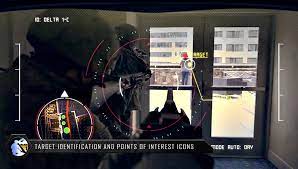Tactical Augmented Reality

Tactical Augmented Reality (TAR) is a technology that blends real-time data and information with the user's view of the physical world. It has been developed for military and law enforcement purposes, but also has applications in other areas such as industrial manufacturing and logistics.
TAR technology typically consists of a head-mounted display or smart glasses, combined with a computer processor and sensors to provide users with a real-time augmented view of their environment. This augmented view can include information such as maps, target identification, or real-time tracking of personnel or vehicles.
One of the key benefits of TAR is the ability to provide users with situational awareness in complex environments, such as urban areas or battlefields. TAR can also enhance decision-making by providing users with real-time data and information, allowing them to make more informed decisions in rapidly changing situations.
In a military context, TAR can provide soldiers with real-time information about their environment, including the location of friendly and enemy forces, maps of the terrain, and information about potential threats. This information can be critical in helping soldiers make decisions in rapidly changing situations.
TAR can also be used for training purposes, allowing soldiers to practice operating in simulated environments that closely resemble real-world scenarios. By providing soldiers with realistic training scenarios, TAR can help to improve their skills and readiness for real-world missions.
In a law enforcement context, TAR can provide police officers with real-time information about their surroundings, including the location of suspects and potential threats. This information can help officers make better-informed decisions and respond more effectively to dangerous situations.
TAR also has applications in industrial manufacturing and logistics, where it can be used to provide workers with real-time information about production processes, inventory levels, and shipping schedules. This information can help workers to optimize their processes and improve efficiency.
Despite its many benefits, TAR technology is not without its challenges. One of the main challenges is the need for accurate and reliable data, which can be difficult to obtain in rapidly changing environments. Another challenge is the need for robust and reliable hardware that can withstand the rigors of military and law enforcement operations.
Overall, TAR technology has the potential to revolutionize the way that military and law enforcement personnel operate in complex environments. By providing real-time data and information, TAR can help to enhance situational awareness, improve decision-making, and increase operational effectiveness. As TAR technology continues to evolve, it is likely to become an increasingly important tool for military and law enforcement operations.

